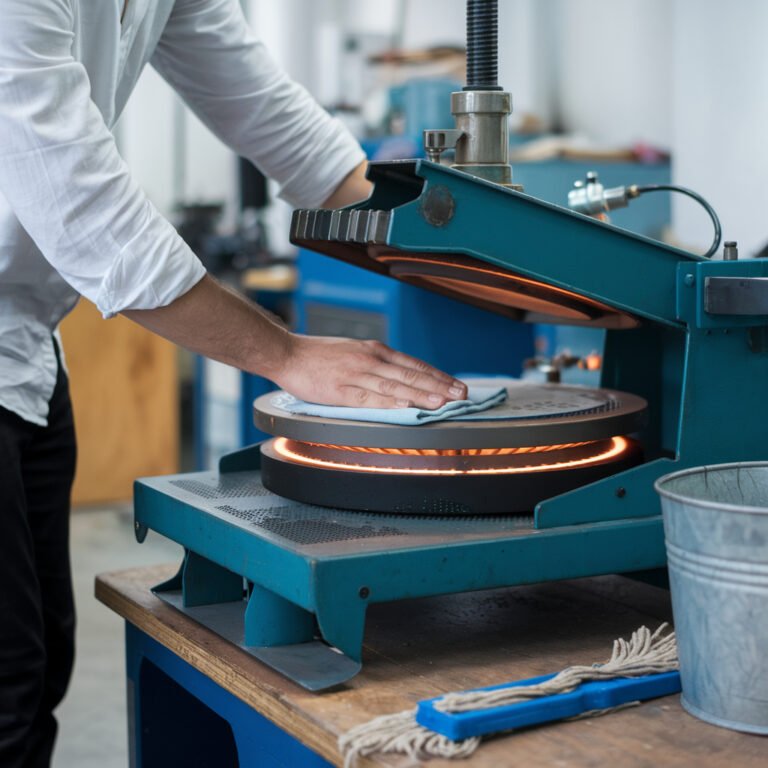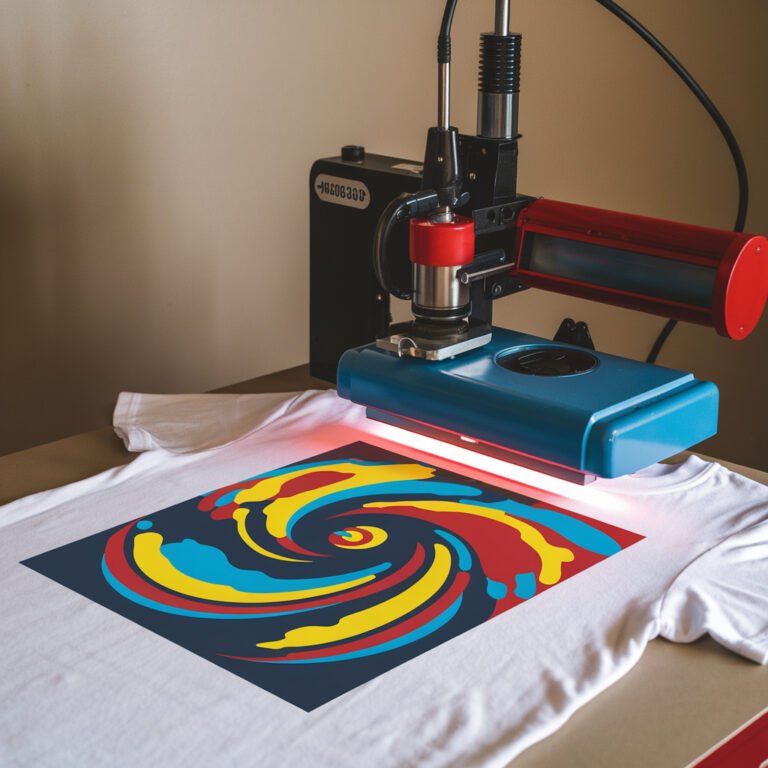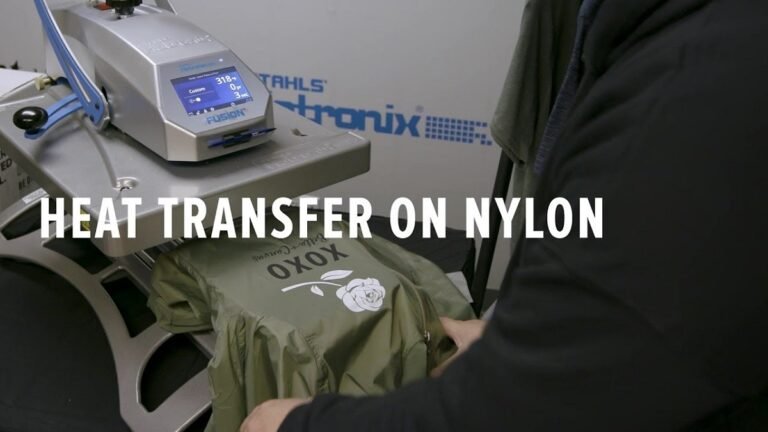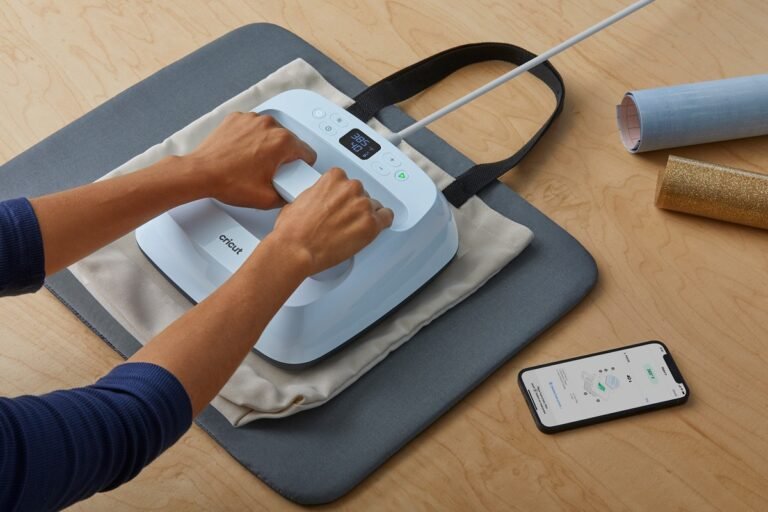How to Make Heat Press Transfers? (Detailed Guide!)
Heat press transfers are an excellent way to create custom designs on clothing, accessories, and other fabric-based items. Whether you’re a business owner, hobbyist, or crafter, learning how to make heat press transfers allows you to personalize garments with designs, logos, or even photographs.
The process involves printing a design onto a transfer medium and using a heat press machine to apply the design to a substrate (usually fabric). With the right materials, equipment, and techniques, you can achieve professional-quality results.
In this guide, we’ll take you step by step through the process of making heat press transfers, from choosing the right materials to executing the final press.
How to Make Heat Press Transfers: Step by Step

Materials and Equipment You’ll Need
Before you start creating your own heat press transfers, gather the following essential materials and equipment:
- Heat Press Machine: A heat press machine is the main tool used to transfer your design onto the fabric. Choose a machine that suits the type of work you plan to do, whether it’s a clamshell, swing-away, or multi-function heat press.
- Transfer Paper: There are different types of transfer paper, depending on the kind of design and the substrate you are working with. Common types include:
- Inkjet Transfer Paper: For use with inkjet printers.
- Laser Transfer Paper: For use with laser printers.
- Sublimation Paper: Used for sublimation printing on polyester fabrics and coated items.
- Printer: You will need a printer to print your design onto the transfer paper. Most people use inkjet or laser printers, depending on the type of transfer paper they’re using.
- Design Software: Design software like Adobe Illustrator, CorelDRAW, or free alternatives like GIMP and Canva can be used to create or edit your designs.
- Substrate (Fabric or Material): The material or fabric you’ll transfer your design onto. Common options include cotton, polyester, blends, and other heat-resistant fabrics.
- Heat Transfer Vinyl (Optional): If you’re working with vinyl designs, you’ll need heat transfer vinyl (HTV) in addition to or instead of transfer paper.
- Cutting Machine (Optional): For vinyl designs, a cutting machine like a Cricut or Silhouette is required to cut the vinyl into the desired shape.
- Teflon Sheet or Parchment Paper: Used to protect your fabric and press from excess ink or adhesive during the transfer process.
Step 1: Create or Choose Your Design
The first step in making a heat press transfer is to create or select a design. You can either design something from scratch using design software, or download pre-made designs from online marketplaces.
- Choose a Design Type: You can create various types of designs, such as logos, text-based designs, images, or complex artwork. Keep in mind the color scheme and how the design will look on your substrate.
- Resolution: Ensure your design is high resolution (at least 300 dpi) for clarity when printed. Low-resolution images can appear pixelated and unprofessional when transferred.
- Consider the Fabric Color: Light fabrics are more forgiving, while dark fabrics may require special handling, such as using opaque transfer paper or layering techniques.
Step 2: Print the Design on Transfer Paper
Once your design is ready, it’s time to print it onto the appropriate transfer paper. Follow these steps:
- Mirror the Design (for Text or Detailed Graphics): If your design contains text or needs to be oriented in a specific way, it’s important to mirror (flip horizontally) the design before printing. This ensures that the design will appear correctly when pressed onto the fabric.
- Choose the Right Transfer Paper: Ensure that you are using transfer paper that matches both your printer type (inkjet or laser) and the color of the fabric (light or dark). For example, transfer paper for light fabrics is usually transparent, while transfer paper for dark fabrics is opaque.
- Print on the Correct Side: Transfer papers have a printable side and a backing. Make sure you’re printing on the right side of the paper (usually marked or slightly textured) to avoid wasting materials.
- Allow Ink to Dry: After printing, let the ink dry completely before handling the transfer paper. This will prevent smudging and ensure a cleaner transfer.
Step 3: Prepare the Substrate
Before applying the heat press transfer, it’s important to prepare the substrate (fabric or material) to ensure a smooth and successful transfer.
- Pre-Press the Fabric: Preheat your heat press machine to the recommended temperature for your fabric and transfer paper. Place the fabric on the heat press and give it a quick pre-press (around 5-10 seconds) to remove any moisture and wrinkles. This helps the transfer adhere better to the fabric.
- Center the Design: Position the transfer paper (design side down) on the fabric. Use a ruler or other alignment tool to ensure the design is centered and straight. A misaligned design can ruin the final product, so take your time here.
Step 4: Apply the Heat Press
With the design and substrate ready, it’s time to transfer the design using your heat press machine.
- Set the Temperature and Time: The exact temperature and time settings depend on the type of transfer paper, ink, and fabric you’re using. Generally, transfer papers work at temperatures between 350°F and 400°F, with pressing times ranging from 10 to 30 seconds. Always refer to the manufacturer’s instructions for precise settings.
- Apply Even Pressure: Close the heat press and apply firm, even pressure. Be careful not to apply too much or too little pressure, as this can affect the quality of the transfer. Most heat press machines have adjustable pressure settings—set this according to the substrate thickness.
- Use a Teflon or Parchment Paper: Place a Teflon sheet or parchment paper between the transfer paper and the top platen of the heat press to protect your fabric and platen from ink bleed or excess adhesive.
- Press and Wait: Once the press is engaged, let the machine apply heat and pressure for the required time. Avoid opening the press prematurely, as this can cause the transfer to fail.
Step 5: Peel and Cool
After the pressing is complete, it’s time to peel away the transfer paper. The peeling method (hot peel or cold peel) depends on the type of transfer paper you used:
- Hot Peel: Some transfer papers require you to peel off the backing immediately after pressing while the transfer is still hot. This is often used with inkjet transfer papers.
- Cold Peel: Other papers may require the transfer to cool down before peeling. This method is common with heat transfer vinyl (HTV) or some opaque transfer papers.
Refer to the instructions on your transfer paper packaging to know which method to use. Peel the paper carefully to avoid lifting any part of the design.
Step 6: Post-Pressing Care
Once the transfer is complete, let the fabric cool down before handling it. Additionally, to ensure the longevity of the transfer, consider the following care tips:
- Wash and Dry Instructions: If you’re producing garments, it’s important to communicate proper washing instructions to maintain the transfer’s quality. Most transfers should be washed inside-out with cold water and mild detergent. Avoid high heat when drying.
- Cure the Design (Optional): For extra durability, you can press the fabric one more time (using a Teflon sheet) after peeling the transfer paper. This helps to “cure” the design, making it more resistant to washing and wear.
3 Most Common Types of Heat Press Transfers
Depending on the material and design method, here are some common types of heat press transfers:
- Sublimation Transfers: Sublimation printing uses special inks that convert to gas under heat and pressure, bonding with polyester fabrics or coated surfaces. It’s ideal for vibrant, permanent designs on polyester clothing, mugs, and other items.
- Heat Transfer Vinyl (HTV): HTV involves cutting designs from colored vinyl sheets, which are then heat pressed onto fabric. It’s popular for creating custom t-shirts, sports uniforms, and personalized items.
- Inkjet or Laser Transfers: These involve printing a design onto transfer paper using either an inkjet or laser printer. The transfer paper is then heat pressed onto the fabric, making it an affordable option for custom apparel.
Conclusion
Creating heat press transfers is a rewarding process that allows you to customize clothing, accessories, and various fabrics with unique designs. By following the steps outlined in this guide—choosing your design, printing on transfer paper, preparing your fabric, applying heat with a press, and peeling the transfer paper—you can create professional-quality products at home or for your business.
Whether you’re using sublimation printing, heat transfer vinyl, or inkjet transfers, understanding the right techniques and materials is crucial for success. With practice and attention to detail, you’ll be able to make vibrant, durable, and high-quality heat press transfers.





